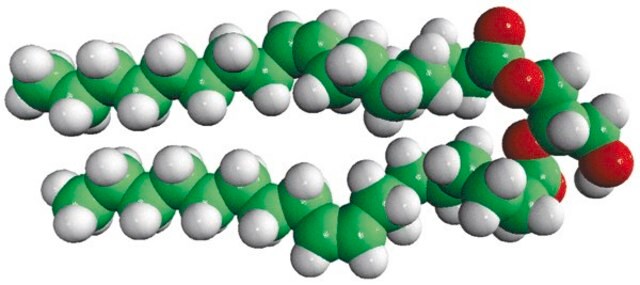Kluczowe dokumenty
L7895
Lipopolysaccharides from Salmonella typhosa
γ-irradiated, BioXtra, suitable for cell culture
Synonim(y):
LPS
About This Item
Polecane produkty
pochodzenie biologiczne
bacterial (Salmonella typhosa)
Poziom jakości
sterylność
γ-irradiated
linia produktu
BioXtra
Postać
lyophilized powder
oczyszczone przez
gel-filtration chromatography
metody
cell culture | mammalian: suitable
zanieczyszczenia
<1% Protein (Lowry)
kolor
white to faint yellow
rozpuszczalność
water: 0.90-1.10 mg/mL, faintly hazy to hazy, colorless to faintly yellow
temp. przechowywania
2-8°C
Szukasz podobnych produktów? Odwiedź Przewodnik dotyczący porównywania produktów
Zastosowanie
Działania biochem./fizjol.
Inne uwagi
produkt powiązany
Kod klasy składowania
11 - Combustible Solids
Klasa zagrożenia wodnego (WGK)
WGK 3
Temperatura zapłonu (°F)
Not applicable
Temperatura zapłonu (°C)
Not applicable
Środki ochrony indywidualnej
Eyeshields, Gloves, type N95 (US)
Certyfikaty analizy (CoA)
Poszukaj Certyfikaty analizy (CoA), wpisując numer partii/serii produktów. Numery serii i partii można znaleźć na etykiecie produktu po słowach „seria” lub „partia”.
Masz już ten produkt?
Dokumenty związane z niedawno zakupionymi produktami zostały zamieszczone w Bibliotece dokumentów.
Klienci oglądali również te produkty
Produkty
Poznaj strukturę, funkcję i różnorodne zastosowania lipopolisacharydów. Odkryj ich rolę w bakteriach, specyficzność serologiczną i potencjał badawczy.
Nasz zespół naukowców ma doświadczenie we wszystkich obszarach badań, w tym w naukach przyrodniczych, materiałoznawstwie, syntezie chemicznej, chromatografii, analityce i wielu innych dziedzinach.
Skontaktuj się z zespołem ds. pomocy technicznej


